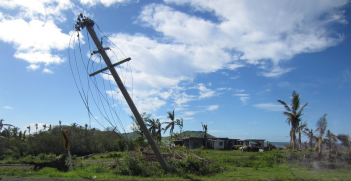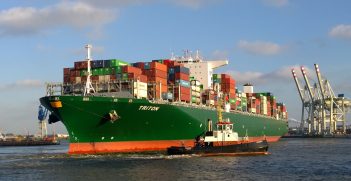E-Commerce and Government Assistance Boost Pacific Exports

As APEC brings leaders to the Pacific, new data shows adoption of digital technology is fuelling exports and business confidence is high throughout the region.
A new survey of Pacific Island exporters shows the proportion of new exporters — enterprises who started exporting in the past three years — has grown 10 percent in four years to reach 41 percent. While the number of businesses reporting an increase in export orders over the past year has slightly declined (49 percent down from 56 percent in 2016), export confidence remains high, with more than two out of three businesses expecting growth over the next year.
In line with confidence, most exporters expect to increase employee numbers during the next 12 months. The data also shows that exporters, on average, provide better jobs at better wages than non-exporters.
The survey conducted by Pacific Trade Invest Australia (PTI Australia) gathered insights from more than 200 businesses working in agriculture, tourism, manufacturing, services and resources across 16 Pacific Islands.
The report, developed by PTI Australia with the support of ACA Research and the Australian Government, complements the limited private sector data from the region, providing a snapshot of export dynamics in the Pacific and insights into changes and trends in Pacific exports. The report shines a light on business confidence, opportunities and pain points; the use of digital technologies by Pacific Island exporters; and local awareness of economic and trade agreements between Australia and Pacific Island nations such as the Pacific Agreement on Closer Economic Relations Plus (PACER Plus).
E-Commerce boost exports
Fueling this growth in export and confidence are online channels, which are used by 79 percent of exporters — including social media (67 percent) and their own or third-party websites or apps (52 and 20 percent respectively) — to generate revenue.
While mature exporters and agricultural exporters are less likely to use social media channels and other forms of e-commerce, online channels are used by an impressive 91 percent of tourism exporters.
Easier access to digital devices, increased usage among customers and better information and communication infrastructure are all contributing to the rise of ecommerce in the Pacific. With small populations, vast distances and complicated logistics, the Pacific has a lot to gain from online commerce and the research shows exporters are innovative and proactive in finding new ways to boost sales.
Barriers to exporting
The survey data confirmed PTI Australia’s experience on the ground that access to finance remains one of the biggest challenges faced by the majority of exporters in the region with 59 percent finding it difficult to obtain finance for their exporting activities. This is a major barrier to exports, along with high energy prices, transport costs and the impact of natural disasters.
Most exporters indicate they would consider some level of foreign investment to grow and overcome financing barriers. This suggests the market is primed for impact investment, which can drive sustainable economic growth in sectors such as agriculture, aquaculture, forestry, manufacturing, renewable energy, eco-tourism and microfinance.
Pacific governments’ policies are seen as less of an obstacle and the US-China trade war was not mentioned. Despite high awareness of free trade agreements (FTAs) and closer economic partnerships, only a relatively small proportion of exporters are seeing the benefit. These agreements weren’t considered as important as developing policies to overcome logistic issues like lack of sea routes, reducing the overall costs of doing business and capacity constraints in the Pacific.
The power of proximity
PTI Australia’s research reiterates the importance of Australia and New Zealand as key export markets for Pacific Island exporters with 92 percent of exporters regarding them as main destinations. Intra-regional trade is growing too, with more than two in three businesses trading within the region.
Pacific exporters are using the Trans-Tasman economies as their happy hunting ground. The data shows Pacific-based exporters in general use intra-regional trade to get their sea legs as an international exporter before expanding to Australasia, Asia and beyond. In terms of new markets, most exporters are looking to Asia (40 percent), followed by North America (32 percent) and Europe (26 percent).
Helping Pacific nations transition from aid to trade
The findings showed the Australian Government’s assistance does make a difference in the Pacific. An agency of the Pacific Islands Forum Secretariat funded by the Australian Government, PTI Australia’s export division focuses on the development of export-capable private sector businesses and international promotion and support of exporters to enable sustainable economic growth and increased trade.
Through our work, we focus on helping countries to expand and diversify their markets and products for export to offset the inherent challenges of the region’s market size and remoteness. This support is proving valuable. The survey shows that nearly a third of businesses surveyed have contacted PTI Australia for assistance in increasing export orders.
PTI Australia will continue to support Pacific businesses to facilitate trade, attract investment and create jobs to make long-term, sustainable improvements to Pacific economies.
Caleb Jarvis is PTI Australia’s trade and investment commissioner.
This article is published under a Creative Commons Licence and may be republished with attribution.





